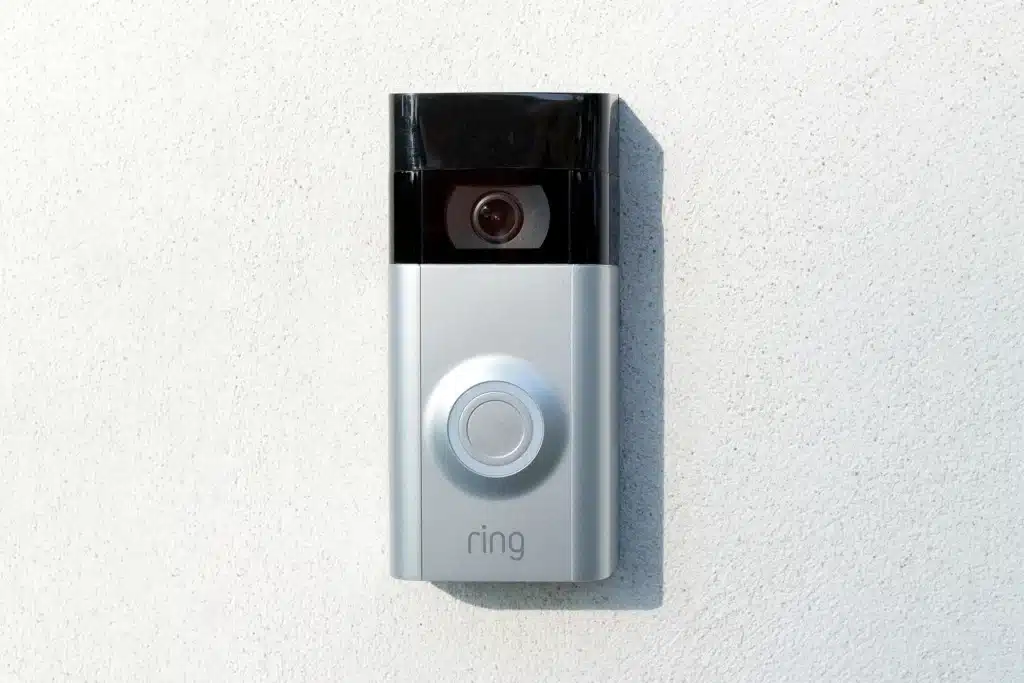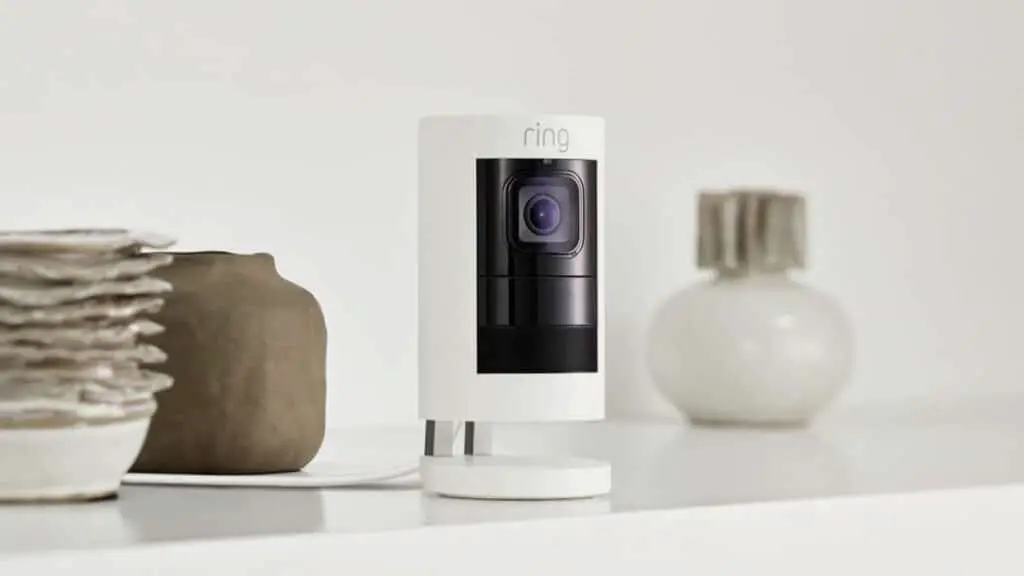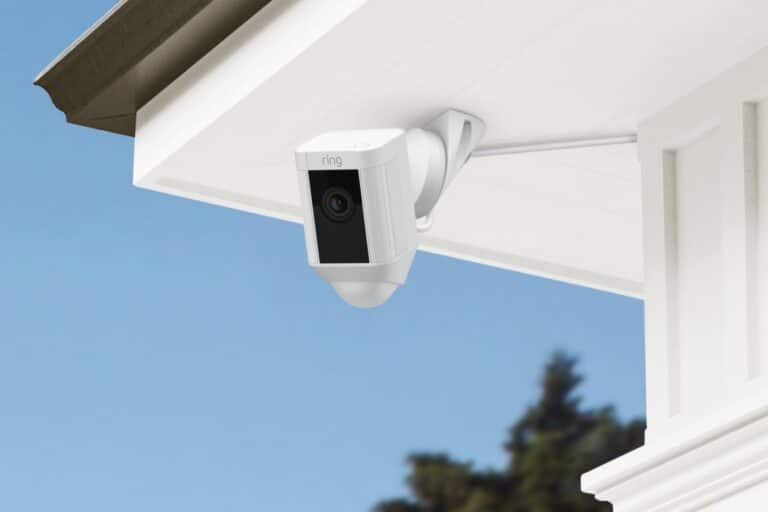Introduction
How Much Data Does A Ring Camera Use Per Month: With the rapid advancement of technology and the ever-increasing demand for home security, smart devices like Ring cameras have become a popular choice for homeowners seeking peace of mind. These internet-connected security cameras offer real-time monitoring, motion detection, and remote access features, making them invaluable tools for safeguarding our homes. However, as we embrace the convenience and benefits of such devices, it becomes essential to understand the data consumption they entail.
The primary concern for many users revolves around data usage, as it directly impacts their internet bills and overall network performance. To arrive at a comprehensive understanding, we will explore various aspects, including the factors that influence data consumption, the types of data generated by Ring cameras, and the different camera models’ data usage patterns. Additionally, we will discuss how video resolution, recording settings, and frequency of events trigger data transmission.
To help users make the best choice for their needs and network capabilities, we will also compare the data consumption of the Ring camera to that of similar smart security cameras on the market. Keeping our smart gadgets running smoothly and cheaply is becoming important as the IoT, or Internet of Things) ecosystem grows. We hope that by providing more context around how much data Ring cameras utilize, we will help you make the most of your investment in a home security system without sacrificing the safety of your loved ones.

How much data does a Ring camera use in a day?
However, seeing as your Ring Cam is supposed only to record when it detects motion, it should consume around 1-5 GB monthly. Meanwhile, cameras that record 24/7 will consume over 100 GB a month without remorse. It’s worth noting that if your camera detects motion a lot, the monthly consumption will increase.
The data usage of a Ring camera in a day can vary based on several factors, including the camera model, video resolution settings, frequency of events, and the types of activities captured. In order to help people protect their homes without breaking the bank, companies like Ring have developed security cameras that use as little data as possible.
On average, a standard Ring camera set to record and stream in 1080p resolution might use anywhere from 200 MB to 500 MB of data per day. This estimate accounts for both live streaming and motion-activated recordings. However, it’s essential to note that this is a rough approximation, and actual data usage may differ depending on usage patterns.
Cameras with a higher maximum recording resolution (such as 2K or 4K) will require more storage space than their 1080p counterparts. Data consumption can rise if your camera records a large number of motion events. Data usage may also be affected by enabling features such as two-way audio or continuous recording. The sophisticated compression algorithms built into ring cameras are designed to reduce data consumption while maintaining a high standard of video quality. They optimize data management by combining cloud storage with local storage (if available).
How much internet does a Ring camera take?
1-2 Mbps
Ring recommends 1-2 Mbps per device for both upload and download speeds. Depending on the camera and video quality that you select, the Nest camera requires anywhere from 0.15 to 4 Mbps of bandwidth and Arlo cameras use 0.3 – 1.5 Mbps.
Several things determine how much data a Ring camera uses online. The frequency of motion detection, the amount of live broadcasting, and the amount of cloud storage are all factors. Ring security cameras are trustworthy and can record valuable footage for later review.
A typical Ring camera configured to record and stream in 1080p HD during the live recording or when incidents of motion are detected may require ranging from 6 to 10 Gb (megabits per second) in internet traffic. It’s important to remember that this is just an estimate and that your camera model and settings may affect your real battery life. Generally speaking, the internet bandwidth needed to send video data from higher-quality cameras, such as those that are capable of recording in 2K or 4K resolution, will be more. Constant recording or two-way audio can also have an effect on how people use the internet.
How do I check my Ring data usage?
The “Data” tile is available on the Ring app dashboard and on the Alarm Pro device screen. When you tap it, you’ll see the the amount of data you’ve used this month. You will also get push notifications with data use updates.
To check your Ring data usage, you can follow these steps:
Open the Ring App: Ensure that you have the Ring app installed on your smartphone or tablet. Launch the app and log in to your Ring account using your credentials.
Access Device Settings: Once you are logged in, tap on the three-lined menu icon (☰) in the top left corner of the app’s main screen. This will open the side menu.
Select “Devices”: From the side menu, choose the “Devices” option. This will take you to a list of all the Ring devices associated with your account.
Choose the Camera: Find and select the Ring camera for which you want to check the data usage. This will open the camera’s live view or settings page.
View Data Usage: Look for the “Device Health” or “Data Usage” section within the camera’s settings page. It’s usually under the app’s storage or cloud settings for the camera, however the precise position can change from version to version.
Check Data Usage: In the “Data Usage” section, you should be able to see details about the camera’s data usage over a specific period, such as daily, weekly, or monthly. The information displayed may include the amount of data uploaded to the cloud, data downloaded for streaming, and any additional data usage details.
How long does Ring camera data last?
The default video storage time is 60 days (in the US). You can manually adjust your storage time from one day to 180 days in the Ring app or on Ring.com. Your default storage period may vary by your location.
The duration for which Ring camera data is stored can vary depending on the type of storage plan you have and the specific Ring camera model you are using. Ring offers different storage options to cater to various user needs and preferences. Here are the typical storage options available for Ring camera data:
Ring Cloud Storage Plans: With Ring’s cloud storage plans, video recordings captured by your Ring cameras are stored in the cloud for a specified period. The storage duration depends on the plan you have subscribed to. Ring offers two main cloud storage plans:
a. Basic Plan: The Basic Plan covers one Ring device and retains motion-triggered video recordings in the cloud for up to 60 days.
b. Protect Plan: The Protect Plan covers all Ring devices at a single location and provides more extended storage for video recordings. It stores motion-triggered videos for up to 60 days as well.
Local Storage (For Some Models): Some Ring camera models have local storage options, like a microSD card slot or other storage devices. With local storage, the data remains on the physical storage medium until it reaches capacity.
Does Ring camera use a lot of data?
However, given that your Ring Cam is only meant to record in response to motion, its monthly data usage should be somewhere in the range of 1-5 GB at most. Meanwhile, cameras that record 24/7 will consume over 100 GB a month without remorse. It’s worth noting that if your camera detects motion a lot, the monthly consumption will increase.
Ring cameras are engineered to minimize the stress on your network, but the exact amount of data used by the device will depend on a variety of factors. Here are the key factors that influence the data usage of Ring cameras:
Video Resolution: The video resolution setting on your Ring camera significantly affects data consumption. Higher resolutions, such as 2K or 4K, will use more data compared to lower resolutions like 1080p or 720p.
Motion Events: Ring cameras are equipped with motion sensors that activate recording when motion is detected. The frequency of motion events and the length of recorded clips impact data usage. In high-traffic areas or busy neighborhoods, more frequent events may lead to slightly higher data consumption.
Live Streaming: Viewing live feeds from your Ring camera through the app uses data, especially if you frequently check the live view.
Cloud Storage: If you have a Ring Protect plan that includes cloud storage for video recordings, the camera will upload the recorded clips to the cloud, using data for transmission.
Two-Way Audio: Using the two-way audio feature to communicate with people near the camera also requires data.
Despite these considerations, Ring cameras employ advanced compression techniques to optimize data usage without compromising video quality significantly.
Does a Ring camera cost monthly?
Ring’s monthly subscription plans are among the most affordable that we’ve ever seen. Ring Protect Basic costs $3 a month or $30 a year, Plus costs $10 per month or $100 a year, and Pro costs $20 a month or $200 a year.
Ring cameras do not necessitate a monthly subscription cost. The cameras can be purchased independently of a service plan, and many of its most basic features can be put to use without a membership. Users can choose to subscribe to a plan, though, if they want to access more advanced tools and other benefits.
Here’s a breakdown of the costs associated with Ring cameras:
Standalone Device: When you purchase a Ring camera, you pay a one-time upfront cost for the hardware. This includes the camera itself, any necessary mounting accessories, and the power supply.
Optional Ring Protect Plans: Ring offers subscription plans called Ring Protect Plans, which provide additional features and cloud storage for recorded videos. These plans are optional, and you can choose whether or not to subscribe.
Free Features: Even without a subscription, Ring cameras offer essential features like live view, motion-activated notifications, two-way audio communication, and access to the last 24 hours of video history. These features do not require a monthly fee.
Does the type of Ring camera affect data usage?
Yes, the type of Ring camera can significantly affect data usage. Different Ring camera models come with varying specifications and capabilities, which directly impact how much data they consume. Here are some ways in which the type of Ring camera can affect data usage:
Video Resolution: The resolution of the camera plays a crucial role in data consumption. Higher-resolution cameras, such as those capable of recording in 2K or 4K, will use more data compared to cameras with lower resolutions like 1080p or 720p. Higher resolution provides better image quality but also requires more bandwidth for data transmission.
Frame Rate: The frame rate at which the camera records also affects data usage. Cameras with higher frame rates, such as 30 frames per second (fps), will consume more data than those with lower frame rates like 15 or 10 fps.
Motion Detection Sensitivity: Ring cameras with The amount of data used can be changed by adjusting the intensity of the motion detector. It’s possible that higher sensitivity choices will lead to more motion-triggered events, which will use more data.
Live Streaming: Some Ring camera models allow live streaming of the video feed through the app. Using the live view feature will consume data, especially if you access the live stream frequently.
Cloud Storage: Cameras with cloud storage capabilities will upload recorded clips to the cloud for access through the Ring app. The frequency and duration of motion events will determine the amount of data uploaded to the cloud.
Does Ring offer any data-saving features?
Ring offers features like motion zones and motion sensitivity adjustments that can help reduce unnecessary recordings and potentially lower data usage.
Yes, Ring offers several data-saving features to help users manage their internet usage more efficiently while using Ring cameras for home security. These features are meant to make the best use of data without affecting important functions. Here are some data-saving features offered by Ring:
Adjustable Video Resolution: Most Ring camera models allow users to adjust the video resolution settings. By choosing a lower resolution, such as 1080p or 720p, users can reduce the amount of data required for video transmission without significant loss in image quality.
Motion Detection Sensitivity: Ring cameras have customizable motion detection sensitivity settings. By fine-tuning these settings, users can reduce unnecessary motion-triggered events, leading to less frequent data uploads to the cloud.
Motion Scheduling: Some Ring cameras offer motion scheduling features. Users can set specific times when they want motion detection to be active, reducing data consumption during designated periods when monitoring may not be necessary.
Live View Optimization: Ring has implemented smart algorithms that help optimize live view streaming. The app intelligently adjusts video quality based on network conditions to ensure smooth streaming while minimizing data usage.
Local Storage Options: Certain Ring camera models support local storage options, such as using a microSD card. Storing footage locally reduces the need for cloud storage and can help save on data usage.
Ring Protect Plan Flexibility: Users can choose from different Ring Protect Plans, including a Basic Plan that covers only one device and a Protect Plus Plan that covers multiple devices. Subscribing to a plan that fits your needs can help manage cloud storage usage and data consumption.

Conclusion
Understanding the data usage of a Ring camera per month is crucial for homeowners looking to strike a balance between home security and internet consumption. We have uncovered significant insights into the factors influencing data consumption and the various elements that impact a Ring camera’s data usage. The resolution and video quality settings significantly affect data consumption, with higher resolutions demanding more bandwidth. Users seeking to conserve data should consider adjusting these settings according to their specific needs and preferences.
Moreover, the frequency of events, such as motion detections and live streaming, directly impacts data usage. Users in high-traffic areas or those with active monitoring preferences may experience more substantial data consumption than those in quieter neighborhoods. Additionally, it is evident that Ring bandwith cameras are designed to be efficient in data usage, employing advanced compression techniques to minimize the amount of data transmitted without compromising video quality significantly. For those concerned about internet data caps, selecting storage options wisely can also play a role.
Utilizing local storage or opting for Ring Protect plans with cloud storage can help manage data usage more effectively. While the exact data consumption may vary depending on individual use cases, our research indicates that Ring cameras generally consume a moderate amount of data per month, making them suitable for most standard internet plans. As the smart home ecosystem continues to evolve, optimizing data usage for security devices like Ring cameras will remain essential. By considering their specific requirements and habits, users can ensure that their home security systems operate efficiently while staying well within their data limits.

